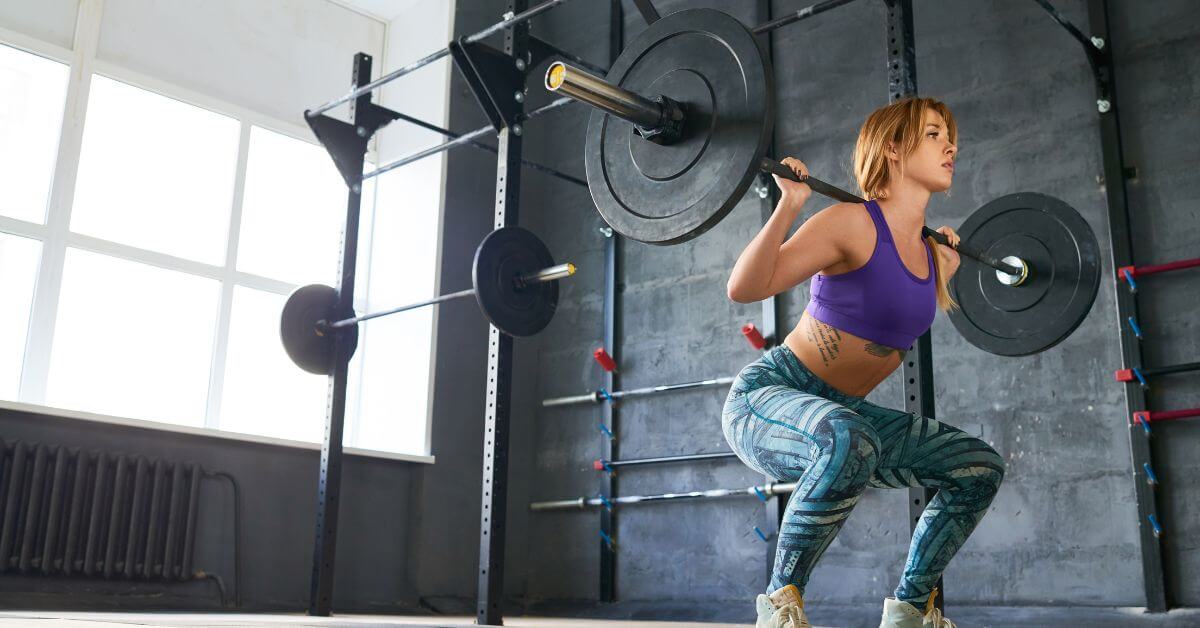Barbells are part of the gym equipment without which you cannot imagine the fitness world. The bar on which you can put hefty kilos of weights and then exercise different muscle groups with them has existed since the dawn of time.
Table of Contents
ToggleAlthough it seems simple and as if there is only one type of barbell, this is untrue. Barbells come in countless shapes, strengths, weights, lengths, and many other features.
To choose the suitable barbell for your training, especially if you are equipping a home gym, you must know what types of barbells exist, what they are for, and which suits your activity best.
In this article, I will explain to you what types of barbells exist to make your choice easier.
Start Building Your Dream Body Today
Ready to elevate your fitness game without falling into the trap of dull, repetitive routines that just don’t deliver? Imagine sculpting your ideal physique and boosting your health, all while still enjoying life’s pleasures, like those irresistible weekend getaways and your aunt’s legendary cheesecake. With our online fitness and nutrition coaching service, you don’t have to compromise. Dive into a personalized fitness journey that blends perfectly with your lifestyle, not against it. Book your completely free discovery consultation today, and take the first step towards a transformation that doesn’t require giving up the joys of life.

“I was skeptical about online fitness coaching, but Functional Body Savage completely changed my perspective. Vanja and Radomir’s personalized approach and attention to detail have helped me achieve goals I never thought possible. I’m stronger, more confident, and grateful for their guidance.”
Emily Thompson, San Francisco, CA
Learn More About Our Online Coaching ServiceQuick Summary
- Types of barbells are standard, Olympic, powerlifting, squat, deadlifting, fixed bar safety squat, swiss, EZ curl, cambered bar, and many others.
- Your choice of the barbell should be influenced by how much money you are willing to spend, how much storage space you have, and what exercises you want to do with it.
- For beginners, the best option is a standard or an Olympic barbell, while the experienced can opt for competition bars or those more complicated to use.
19 Main Types of Barbells
The main types of barbells are standard, Olympic, powerlifting, squat, deadlift, fixed bar safety squat, swiss, EZ curl, and cambered bars.
These are the types of barbells you will find in commercial gyms, but also the ones people use most often.
They differ in length, materials from which they are made, and weights, but also in the exercises performed with their help.
In addition to them, there are also those rare bars, which are excellent for building certain muscle groups or performing specific exercises, which come in unique shapes, sizes, and weights.
Examples are the log barbell, which is in the form of a tree log, the tsunami and earthquake bar, and the freak and buffalo bow bar.
Now I will tell you about all types of barbells in more detail.
1. Standard Barbell
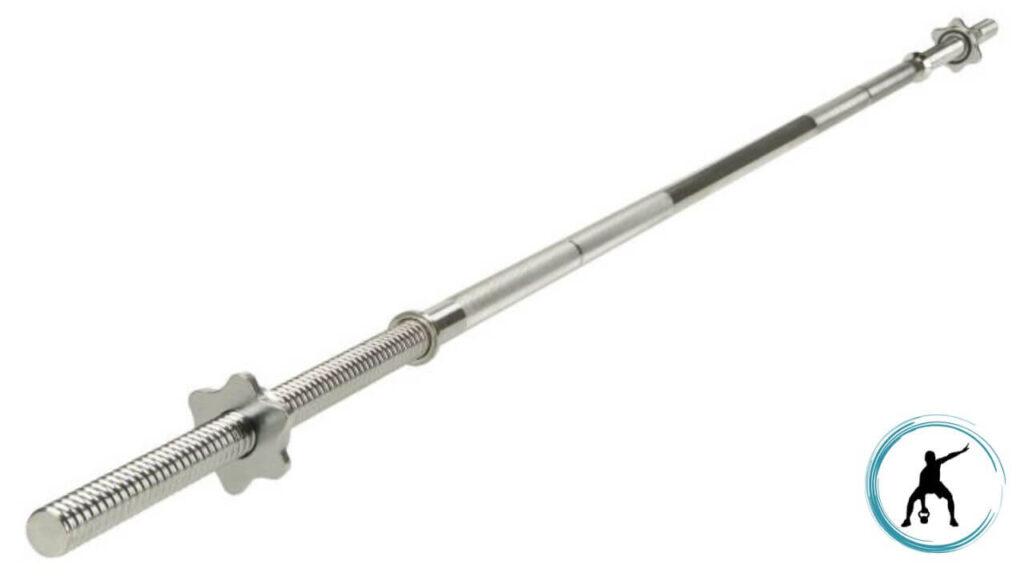
You’ve all encountered standard barbells if you’ve been to any gym at least once.
The barbell is about 7 feet long, weighs about 45 kilograms on average, and is most often made of steel.
Near the middle, there is a substantial, ribbed part over which you grab the barbell, and there are crossbars that prevent the movement of the weights on the bar.
It is the standard version of this type of gym equipment, and you can expect to do all possible exercises with it, from squats to deadlifts to bench presses.
It is excellent for anyone who wants to use it, regardless of experience and strength.
However, if you take your training to a higher level, you must choose another option.
2. Olympic Bars
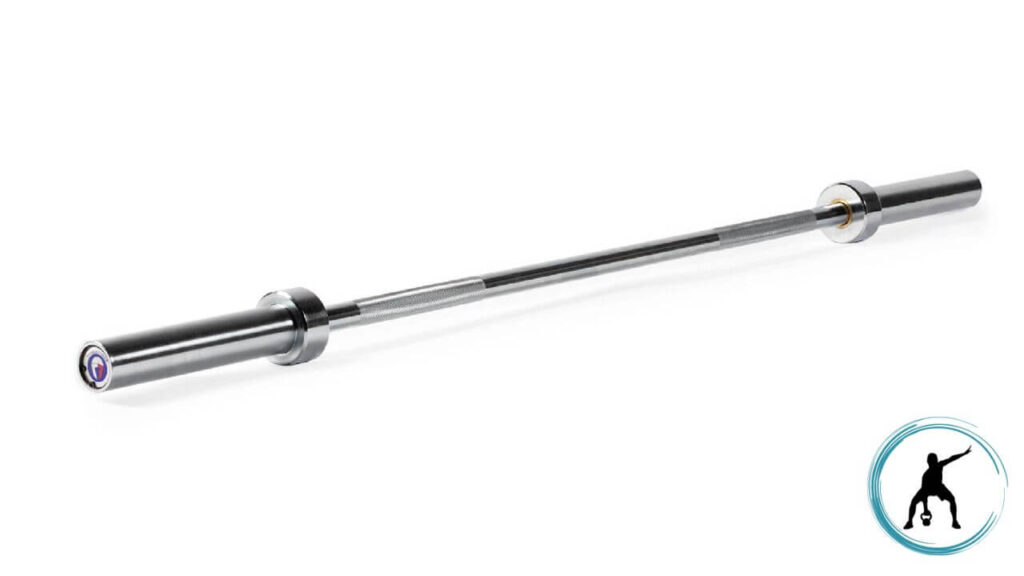
Olympic bars are slightly different from standard versions.
They were adapted to training for competitions, which is how they got their name.
Their length does not differ from the standard version, while the weight differs by only a few pounds.
The parts on which weights are placed are somewhat thicker, so particular types of consequences are placed on this type of barbell.
Olympic bars are often more pliable so that they do not crack during sudden lifting.
The bar is most often made of steel or iron, and the grip part of the bar is usually a little smoother than the others because fast and sudden moves are often performed during competitions.
This prevents the bar from slipping out and potentially injuring the person performing it.
It is recommended for those who are more experienced in lifting barbells and those with a bit of strength, for whom the slightly larger weight of the barbell will not be a problem.
3. Powerlifting Bars
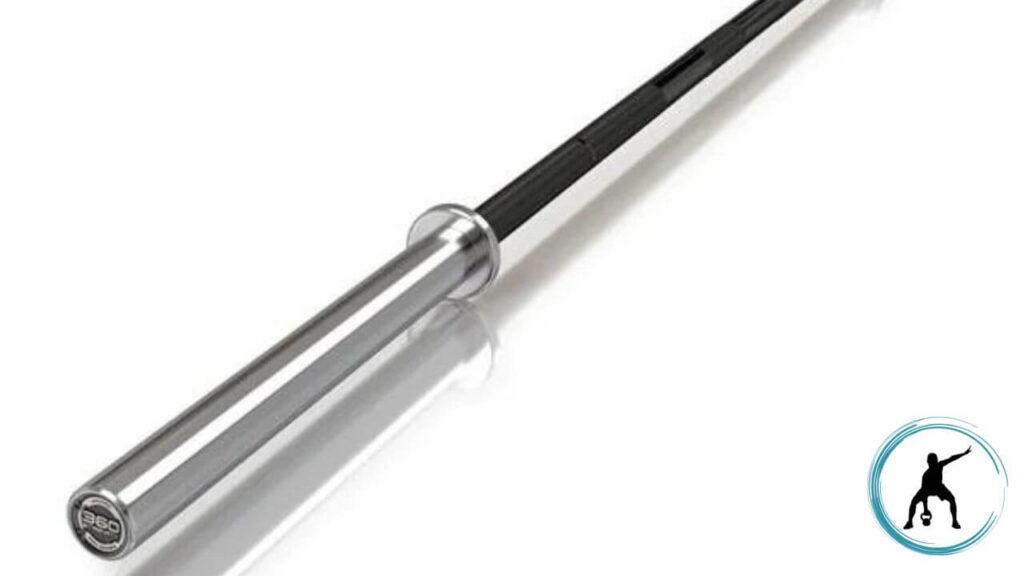
A powerlifting bar is an excellent option for those interested in this discipline in weightlifting and who want to push and challenge their limits in some way.
In essence, powerlifting bars do not differ much from the Olympic bar, except that it is much more complex and has no elastic properties because its primary role is to take on large weights.
It is mainly made of hard metals, most often of high-quality steel, to withstand lifting hefty weights.
Unlike the Olympic and standard bars, the part intended for catching the bar is extra thin so that all powerlifters maintain the correct hand position.
Powerlifting bars are recommended for those who are experienced and have strength, who want to push their limits, and possibly enter the world of powerlifting competitions.
4. Squat Barbell
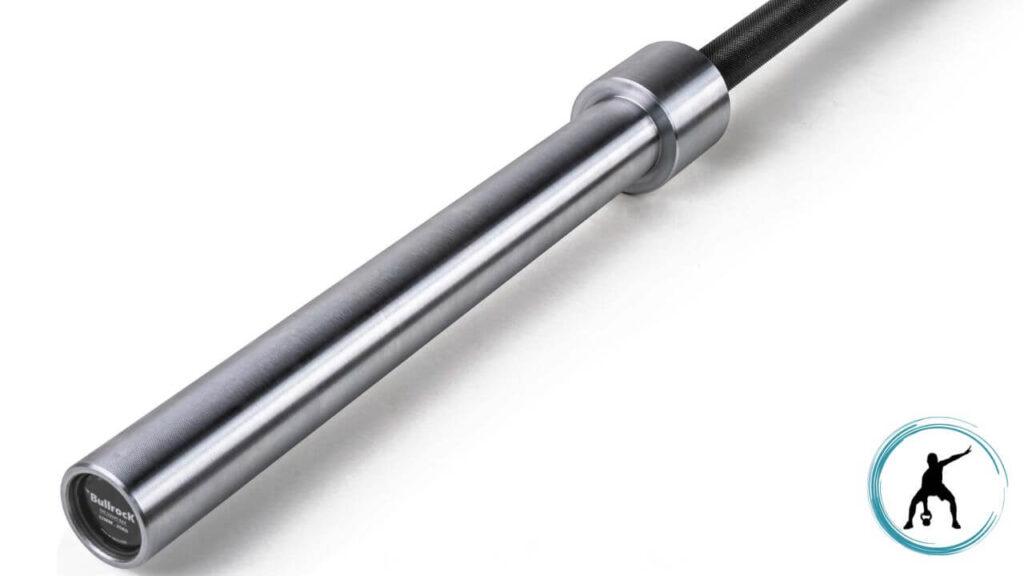
As its name suggests, the squat barbell is personalized for performing different types of squats.
With an average length of 8 feet and 55 pounds, this bar type is much larger than any of the previously mentioned barbells.
What distinguishes it from other classes, in addition to its dimensions and weight, is that the entire rod is covered with knurling to ensure comfort and safety when performing different squats.
It is recommended for those who want to train different types of squats specifically, but for home gyms, it is always better to choose some universal options.
5. Trap Bar or Hex Bar
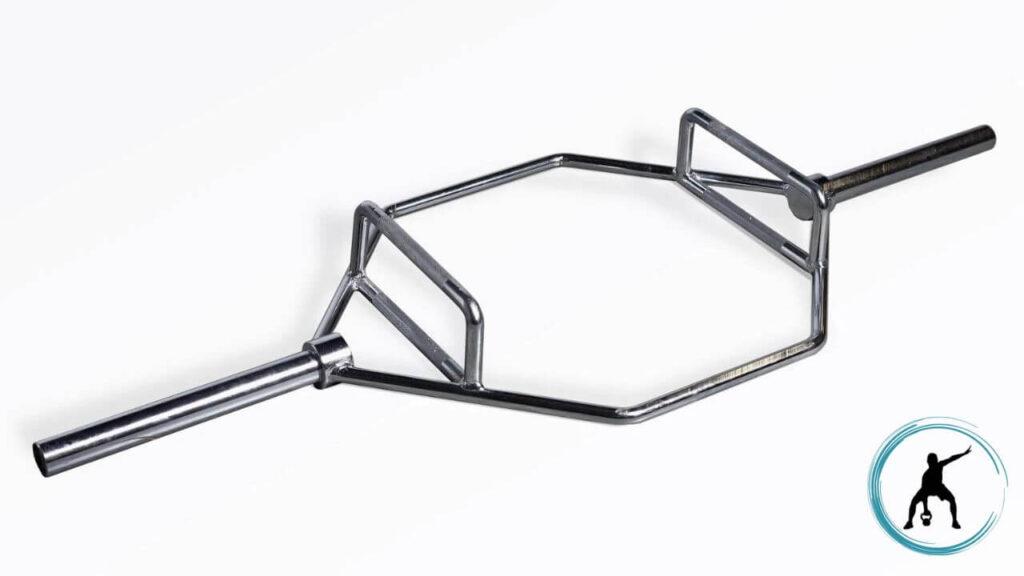
The trap bar also justifies its name, which it got because it has the shape of a kind of trap.
You practically enter it as it has a hexagonal space between the extensions for the weights you stand.
Weights are placed on the side, and there are handles with which you can practically carry the trap bar.
The trap bar is much smaller than other weights and weights and is most often used for conditioning and endurance training because you can efficiently perform exercises on the move.
If you have space in your gym to move freely carrying this type of bar with weights, a trap bar is an excellent choice for you.
6. Deadlift Bar

The deadlift bar is not too different from the standard option, except that it is adapted to those interested in deadlifting.
The only difference is a slightly thicker knurling on the grip parts to avoid potential injuries and ensure safety during exercise.
In addition, they often have an enormous whip that makes them easier to raise quickly and lower.
Their disadvantage is that they are much more expensive than standard bars, although they have few differences.
7. Women’s Bar
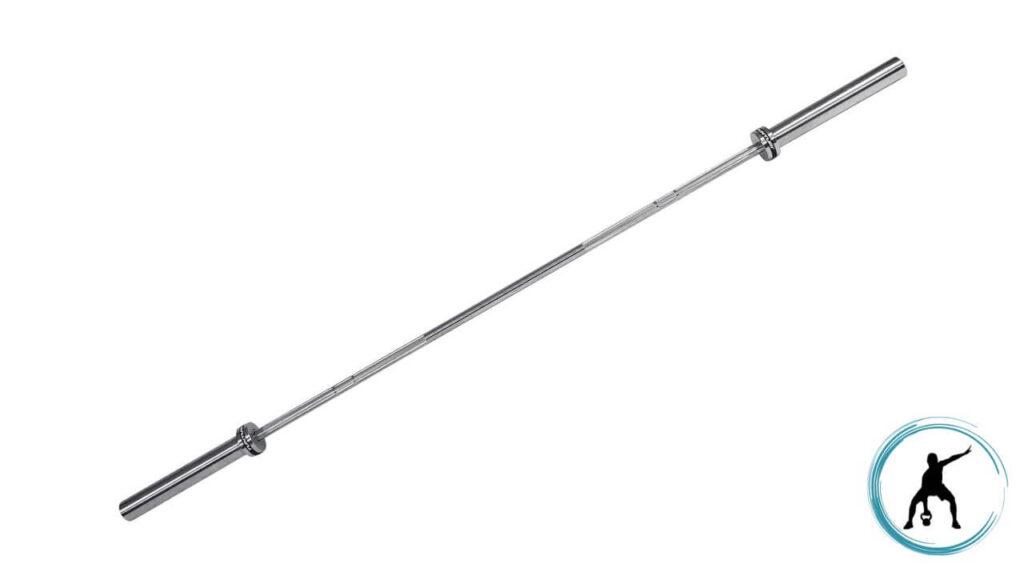
Women’s barbells are significantly lighter than other types and adapted to women who want to train and participate in competitions actively.
When discussing this type, we mainly discuss shorter and lighter barbells.
They are usually about 6 and a half feet long and weigh about 33 pounds.
They are mainly intended for women who want to compete and for whom it is generally more difficult to perform exercises with long and much heavier barbells.
8. Safety Squat Bar
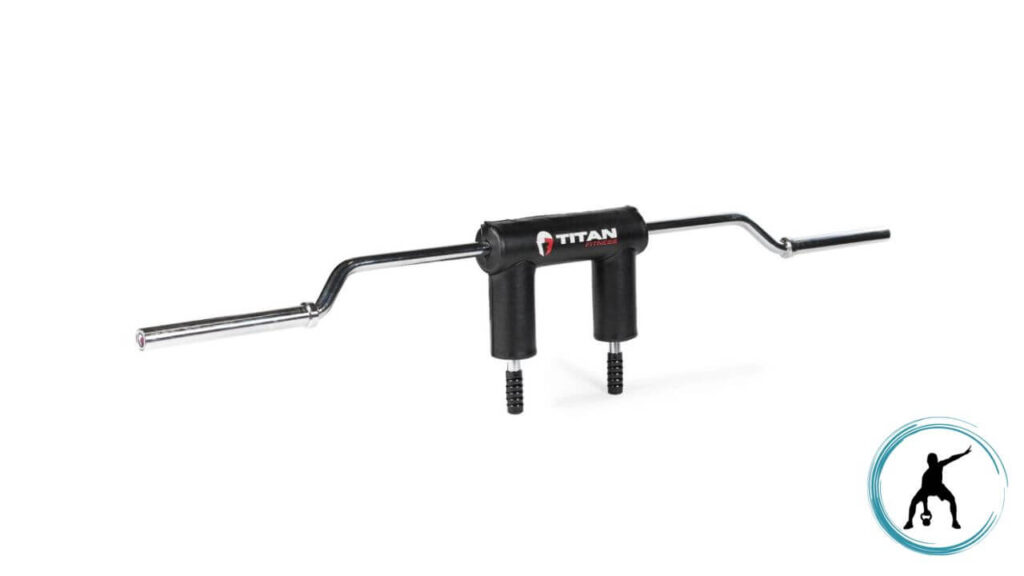
A safety squat bar is an excellent option for beginners who want to exercise safely and with quality.
In essence, safety squat bars are an excellent option if you want to learn the technique of performing squats without the risk of potential injury.
The safety bar has fixed shoulder pads that fit snugly on your shoulders, which makes your training more comfortable and efficient because you will avoid potential pain and wrong execution of exercises.
At least it is not flat, but its shape adheres to the shoulders and straightens only when extended, making exercise even more accessible.
Safety squat bars are an excellent option if you are a beginner and want to become excellent at squats.
9. Swiss Bars
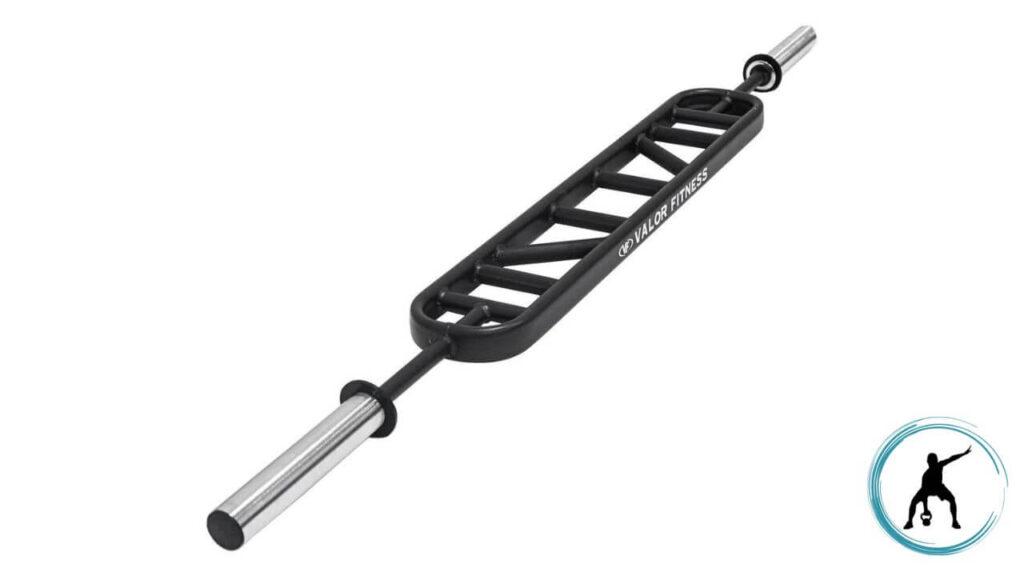
Swiss bar, better known as a multi-grip bar, is a type of bar that provides different options for grip, i.e., holding a barbell.
Its weight varies from 35 to 75 pounds, while its length is generally less than 7 feet.
You can find this bar in most commercial gyms because it is functional.
In essence, it is a hexagonal-shaped bar that consists of a large number of grips, which provide you with countless options for holding and performing different exercises.
The Swiss bar is more expensive than other options, but it is a good choice for home gyms as it offers a handful of exercise options.
It requires experience and a little more strength because it is heavier.
10. Ez Curl Bars
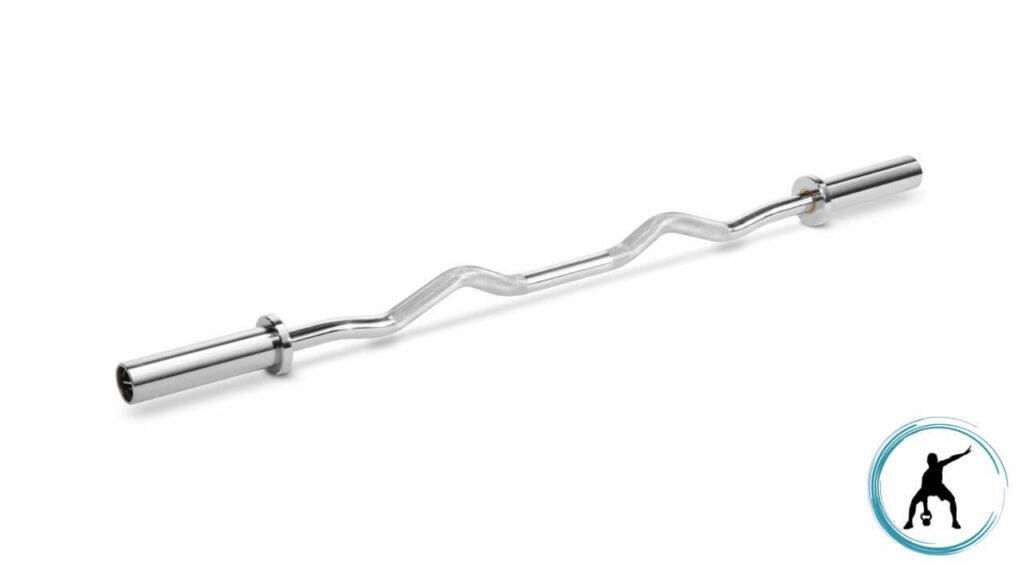
EZ curl bars belong to a group of bars that are used to train specific muscles on the body, which in this case are the arms.
It is much shorter than the other bars, which is 4 ft so that the hands are placed at shoulder height when performing the exercises, without the weights bouncing off.
The weight of it is usually between 20 and 40 pounds. It is made in a curved shape to make the exercises easier to perform and to fit the hands more quickly.
With this type of bar, you can perform countless activities for the biceps, triceps, and forearms, making it an excellent option for a home gym.
11. Cambered Bar
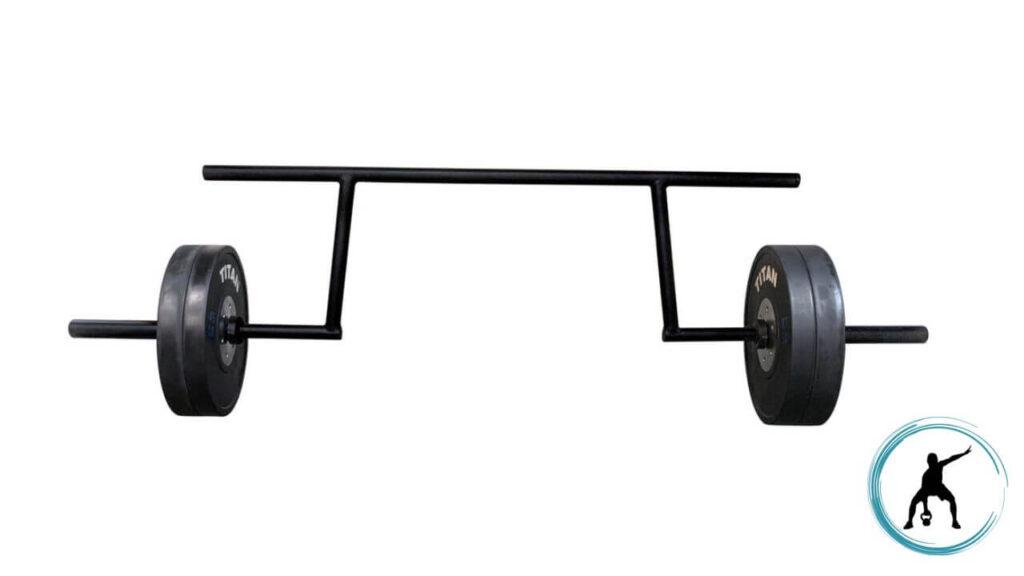
The cambered bar is recommended for those with more experience because it is pretty difficult to perform exercises with it.
In essence, a cambered bar is a solid and heavy bar with another part under it, an extension on which different weight weights are placed.
Performing is pretty awkward and unstable and requires considerable stability, endurance, and core strength.
The cambered bar is pretty heavy and represents one large construction that you practically enter.
It is not recommended for beginners but exclusively for those who are experienced in exercise and have already built up core strength to some extent.
Due to its size and weight, it is not recommended for home gyms.
12. Log Barbell
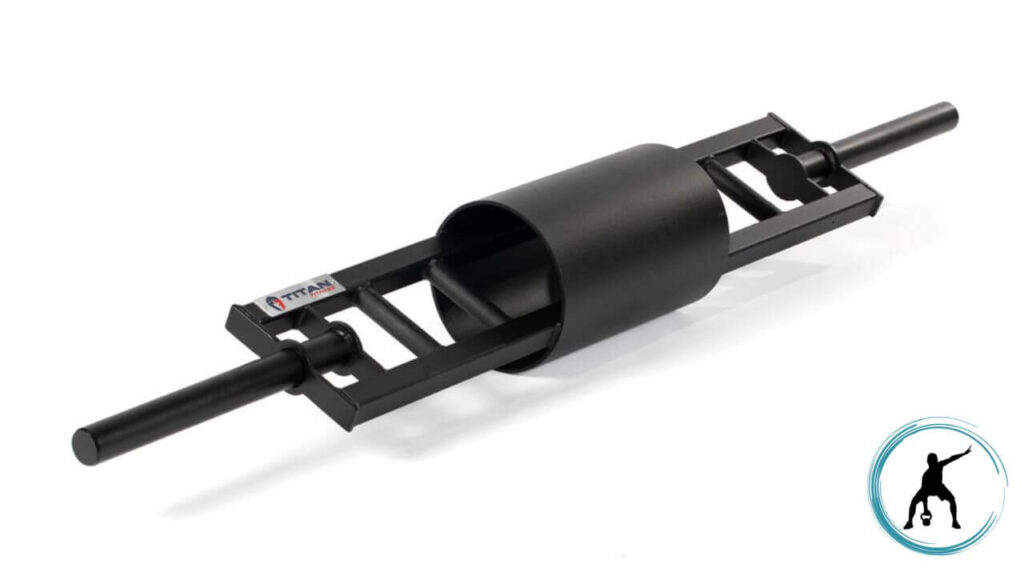
The log bar is most often used for lifting huge weights during training.
It got its name because it practically looks like a log of wood and is usually piled up with large weights, but also because it often has wood parts inside.
More expensive log bar variants are made of solid steel, while cheaper variants are often made of steel and wood.
It is shorter than other barbells and exceptionally durable, as evidenced by the fact that it can withstand weights up to 1000 pounds.
The log bar is excellent for those who want to lift big weights and erase their limits.
13. Tsunami Bar
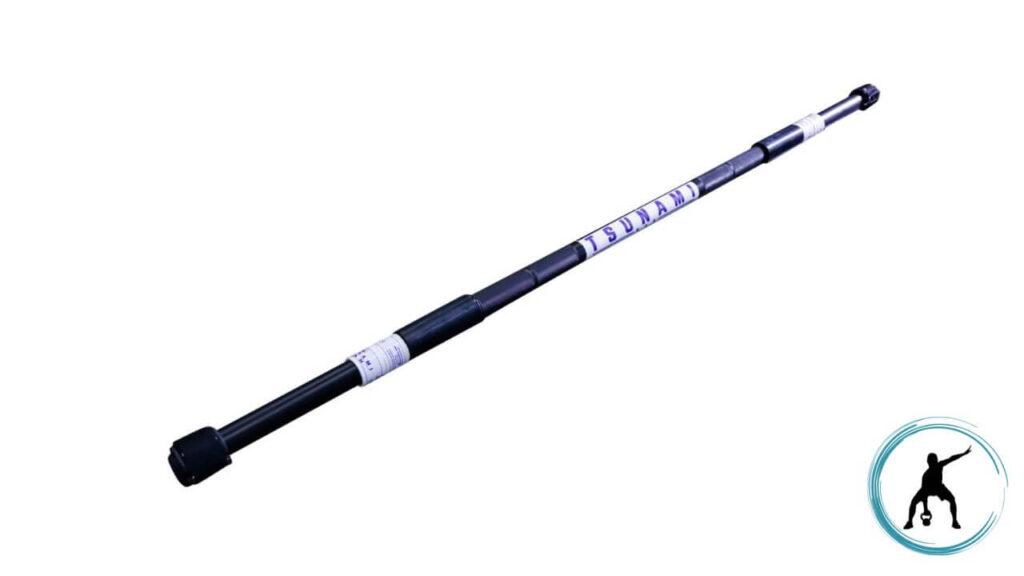
A Tsunami bar is a particular type that requires a lot of experience to train with it.
This is one of the most flexible bars you can find on the market. It usually comes in 8 ft in length and weighs only 15 lbs.
What makes it particularly challenging is its lightness and durability.
When lifting and lowering weights, it bends a lot and creates leaps, which makes training even more complex and can lead to instability during exercise.
It is excellent for developing strength, endurance, and body mobility, but it is not for those who are at the very beginning of training.
14. Earthquake or Bamboo Bar
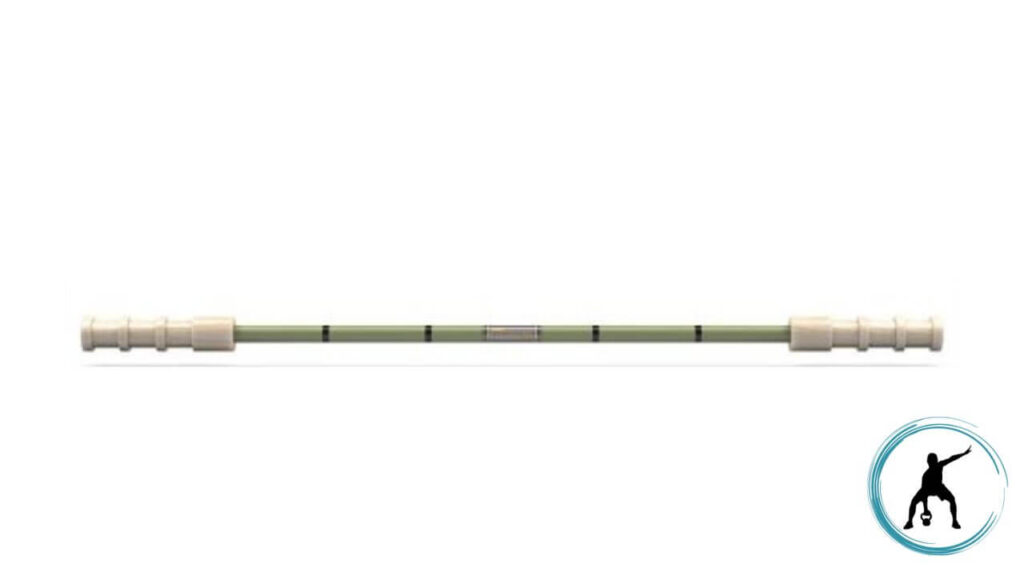
Bamboo, or earthquake bar, is a particular type of bar that does not absorb vibrations, so you get the impression that while you are exercising, you feel like an earthquake is happening.
This type of bar is made of wood and is significantly shorter and lighter because it is made of bamboo and can hold up to 300 pounds.
Knitting with this type of barbell creates so-called oscillating kinetic energy, which makes a particular kind of muscle stabilization.
It represents a serious challenge and is recommended for those who are experienced and want to experiment.
15. Axle Bar
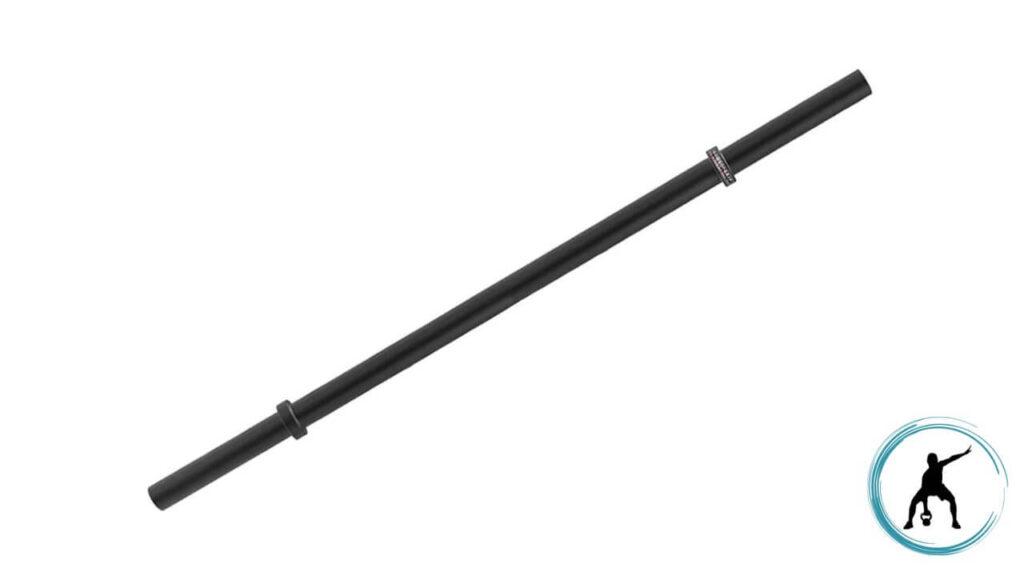
The axle bar is somewhat similar to traditional barbells, and the only difference is that it is much thinner, which is why it is interesting for weightlifters.
The length and weight are more or less similar to traditional bars, but they can accommodate large weights. Interestingly, it is pretty thin and used in axle cleaning and press competitions.
The only thing that is important for you is that it is not recommended for those with a weak grip or small hands because it may be too thin for them and may cause potential injuries.
16. Freak Bar

The freak bar is helpful for those who want to perform different exercises with their bar because it has a grip that can move and move to other places.
Interestingly, its length and weight are practically the same as traditional bars, and the only difference is the grip, which is adjustable and can be changed.
Thus, you can change whether you will perform a wide or narrow bench press and even change the option during exercise.
They are an excellent option for home gyms because you can do various exercises with one barbell.
17. Buffalo Bow Bar
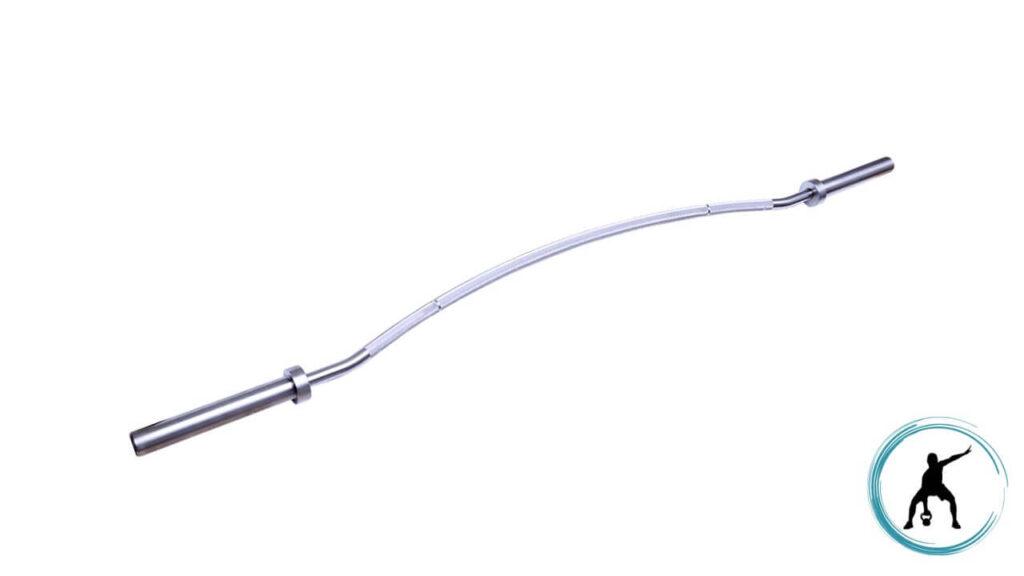
Buffalo bow bar, also known as a Duffin bar, is quite similar to a traditional bar, except it is pretty crooked.
Its inventor is Chris Duffin, who invented this bar to reduce the pressure on the shoulders and back during exercise to prevent various damages and injuries.
It is pretty durable and can be used for squats and many other exercises, and the inventor claims that up to 2000 pounds of weight can be placed on it.
18. Curl Bar
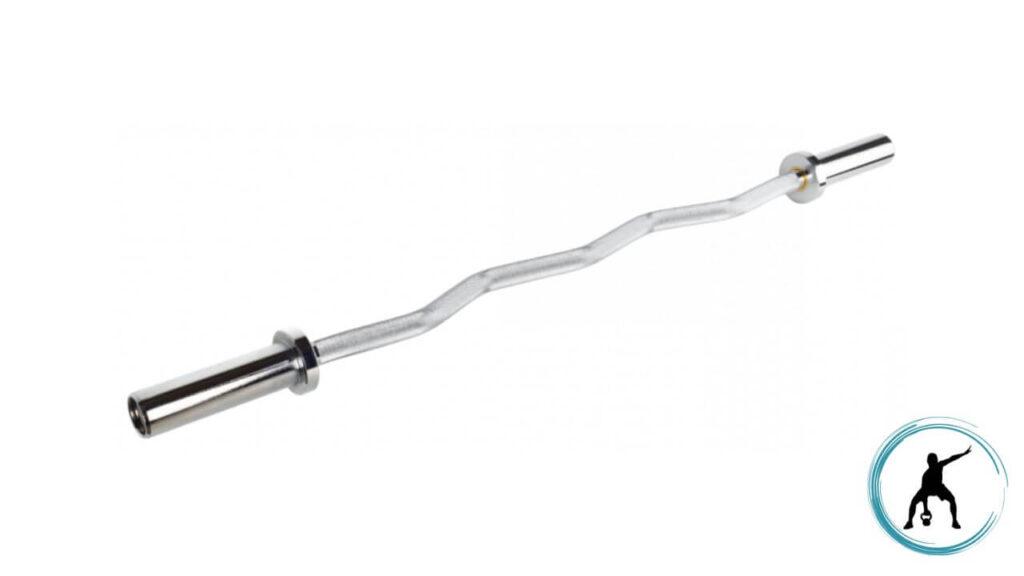
The curl bar is an extended version of the EZ bar, which often comes with many grips on the bar.
In essence, the only essential difference is the number of grips, as well as the length and weight of the rod itself. It is generally much longer and thicker than the EZ bar.
It is also most often used to perform exercises for the muscles of the hands, but it can also be used for exercising the back and other body parts.
There are different types, from those with fixed weights to those on which weights are simply placed.
19. Fixed Bar
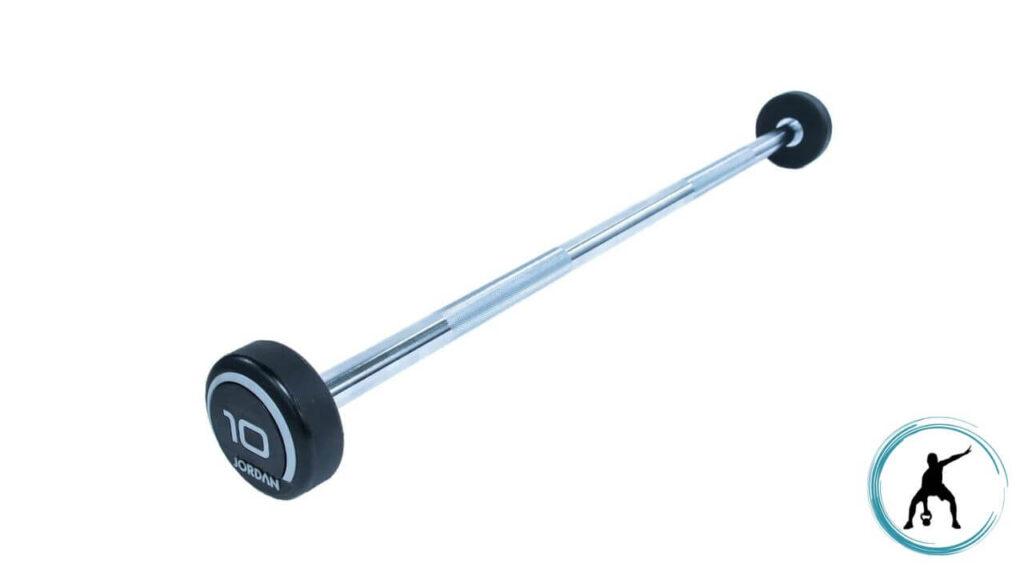
The fixed bar has fixed weights on it that cannot be changed.
They generally come with a straight or curved bar, have weights rounded up to ten or 5 pounds, and are weighted and lifted that way.
The arms are shorter than other barbells and are often used for training the biceps. They are great for commercial gyms but not suitable for home conditions.
Does the Type of Barbell You Use Matter?
Yes, the type of barbell you use matters. The key reason is that different barbells offer different options for training, they are of varying weight and length, and they also require more or less experience and strength for training.
Traditional bars are mostly there for all kinds of exercises, they are suitable for beginners, and they are easy to use, and with them, you will achieve the most outstanding results.
There is an Olympic bar for those a little more experienced who want to raise their muscle mass and strengthen their body and core strength.
On the other hand, bars for specific muscle groups, such as EZ or multi-bar, are excellent when you want to focus on strengthening one part of the body.
In addition to everything, there are more complex options such as bamboo bars, log, and cambered bars, which are options for those who want to improve their knowledge and experience further and strengthen their body beyond the previous limits.
If your development does not follow the choice of the barbell, it may lead to stagnation and not achieving outstanding results.
Start with the traditional one, and then you can move on to any more complex variant.
What to Consider Before Buying a Barbell
Before buying a barbell, it is crucial to consider the price, applicability, space, and storage.
You must define these three basic things before buying any gym equipment, especially barbells.
One mistake can cost you a lot, so you have to be careful when choosing a barbell.
Price
Price is critical when we talk about buying anything.
It often dictates quality, so you must know how much money you are ready to spend purchasing a barbell.
When you define how much money you are prepared to set aside, you need to find a bar that meets all the necessary standards so that you can exercise without problems.
Space & Storage
Space and storage come as the most critical issue.
Measure how much space you are ready to set aside for barbell storage, and choose which one you will choose accordingly.
If you take more extensive options, they can take up a lot of space, which is a big problem in home gyms, where space is limited.
Applicability
Applicability is essential when discussing barbells because you have to think about what exercises you will perform and how well the bar you have chosen meets your needs.
That’s why it’s best to buy universal barbells, such as traditional and Olympic ones because you can do most of the exercises with them.
Benefits of Barbell Training
A barbell has countless benefits because it is still a device that has been used for a very long time in the world of fitness.
The key benefits of a barbell are the same as with most devices, which are its use for muscle growth, strength, and sports performance.
Now I will explain in more detail how different goals are achieved with barbells.
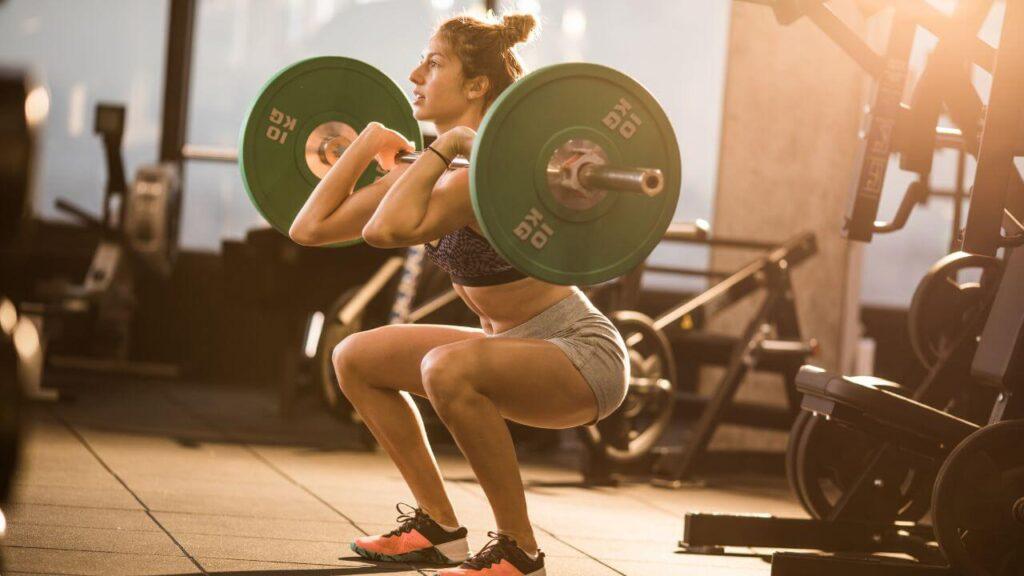
For Muscle Growth
Building muscles is a goal that is well and effectively achieved using barbells and weights.
Training with a barbell focuses on building muscles on the principle of their activation when lifting large weights.
Therefore, it is expected that muscle growth will occur by regularly lifting weights above their range.
For Strength
For those who practice weightlifting and powerlifting, an obvious goal is to increase strength.
When performing squats, deadlifts, and similar exercises, a large number of muscle groups are activated, which ultimately results in the strengthening of the body’s core, as well as the strengthening of different muscle groups.
You may want to check our guide on compound exercises:
For Sport Performance
Sports performance is achieved by active training with smaller weights, without excessive body overloading.
Athletes usually do deadlifts and squats several times to prevent potential injuries by strengthening the body’s core and muscles of the back and legs.
A Quick Breakdown of Barbell Anatomy
An integral part of every barbell is its sleeves, strength, center knurling, load capacity, whip, and finish.
These are the things that each barbell is made of, and the quality and material, as well as the way they are made, affect the quality and strength of your barbell.
In the first place are the basins, the metal parts located at the end of the barbell and on which the weights are placed.
Most of them turn in some way, and the turning system exists so that the lifters can get down quickly under the bar during the snatched moment and make it easier to adjust the arm.
When we talk about strength, we talk about yield and tensile strength.
Yield strength is how much weight can be placed on the bar without it being deformed and warped somehow.
On the other hand, tensile strength is a term that indicates the amount of weight we have to put on the bar for it to break.
These are essential factors that you must consider when buying a barbell.
Load capacity is the number of separate weights you can place on the sleeves without falling.
The bar type is also essential here, depending on which weights are placed and how many will fit.
For example, Olympic weights are thinner to include as many as possible.
The whip is the flexibility of the bar itself, i.e., how much it can bend during exercise without changing its original shape after lifting.
Depending on the type, it varies, so some barbells are more rigid, and some are more flexible.
Finally, there is the center knurling and finish.
Center knurling is the space on the central part of the bar that represents the grip, that is, the part where you grip the bar.
The degree of knurling also varies depending on the type of bar and preferences of the kind of exercises you want to perform with it.
The finish is the very last part applied to the barbell, and its membrane defines how it will look, how durable it will be, and what the grip will be.
If it is coated with black oxide or zinc, you don’t need to worry, you will be comfortable, and the rod will last a long time.
Related Articles:
- 19 Different Barbell Lengths: What Length Barbell Do I Need?
- How Much Does a Barbell Weigh?
- How to Clean Rust off Barbell?
- How to Load a Barbell?
FAQs
What Barbell Do Gyms Use?
Gyms use Olympic barbells the most because they can handle large weights and are much more durable. Compared to other barbells, they are much more universal and can be used by everyone.
What Is the Most Common Barbell?
The most common barbell is the standard barbell because it is universal and can be used by everyone, regardless of previous experience. It is practical, easy to use, and can support a solid amount of weight.
What Are the Different Types of Olympic Bar?
The different types of Olympic bars are powerlifting, multipurpose, and squat bars. The different types of bars are Olympic bars, adapted to the performance of some exercises or the activity level.
Which Barbell Is Best for Beginners?
The best barbell for beginners is the standard barbell because it is the easiest to find, available in most gyms, and is the easiest to use. After some time, beginners can move on to the Olympic barbell.
Is Straight or Curved Barbell Better?
A straight barbell is better because it is easier to control, and it is also easier to build muscle mass and increase strength with it. Curved barbell options are okay to take the stress off your back.
What Is the Best Barbell to Start With?
The best barbell to start with is a standard barbell.
It is the easiest to use, most gyms have it, and with it, you can perform many exercises essential for beginners to start training successfully.
If you have more experience, there are Olympic barbells.
If you want to achieve different successes in the field of competition, there are always powerlifting and similar varieties of barbells.
In addition, countless other barbells can be used to build specific muscle groups and for experienced lifters to experiment and push their limits.
Barbells are generally one of the basic exercises for working in the gym, and you cannot function without them.
Choosing the suitable barbell makes the path to your goal and success easier.
In the comments below, you can tell us which type of barbell you chose and why.
Start Building Your Dream Body Today
Ready to elevate your fitness game without falling into the trap of dull, repetitive routines that just don’t deliver? Imagine sculpting your ideal physique and boosting your health, all while still enjoying life’s pleasures, like those irresistible weekend getaways and your aunt’s legendary cheesecake. With our online fitness and nutrition coaching service, you don’t have to compromise. Dive into a personalized fitness journey that blends perfectly with your lifestyle, not against it. Book your completely free discovery consultation today, and take the first step towards a transformation that doesn’t require giving up the joys of life.

“I was skeptical about online fitness coaching, but Functional Body Savage completely changed my perspective. Vanja and Radomir’s personalized approach and attention to detail have helped me achieve goals I never thought possible. I’m stronger, more confident, and grateful for their guidance.”
Emily Thompson, San Francisco, CA
Learn More About Our Online Coaching Service
